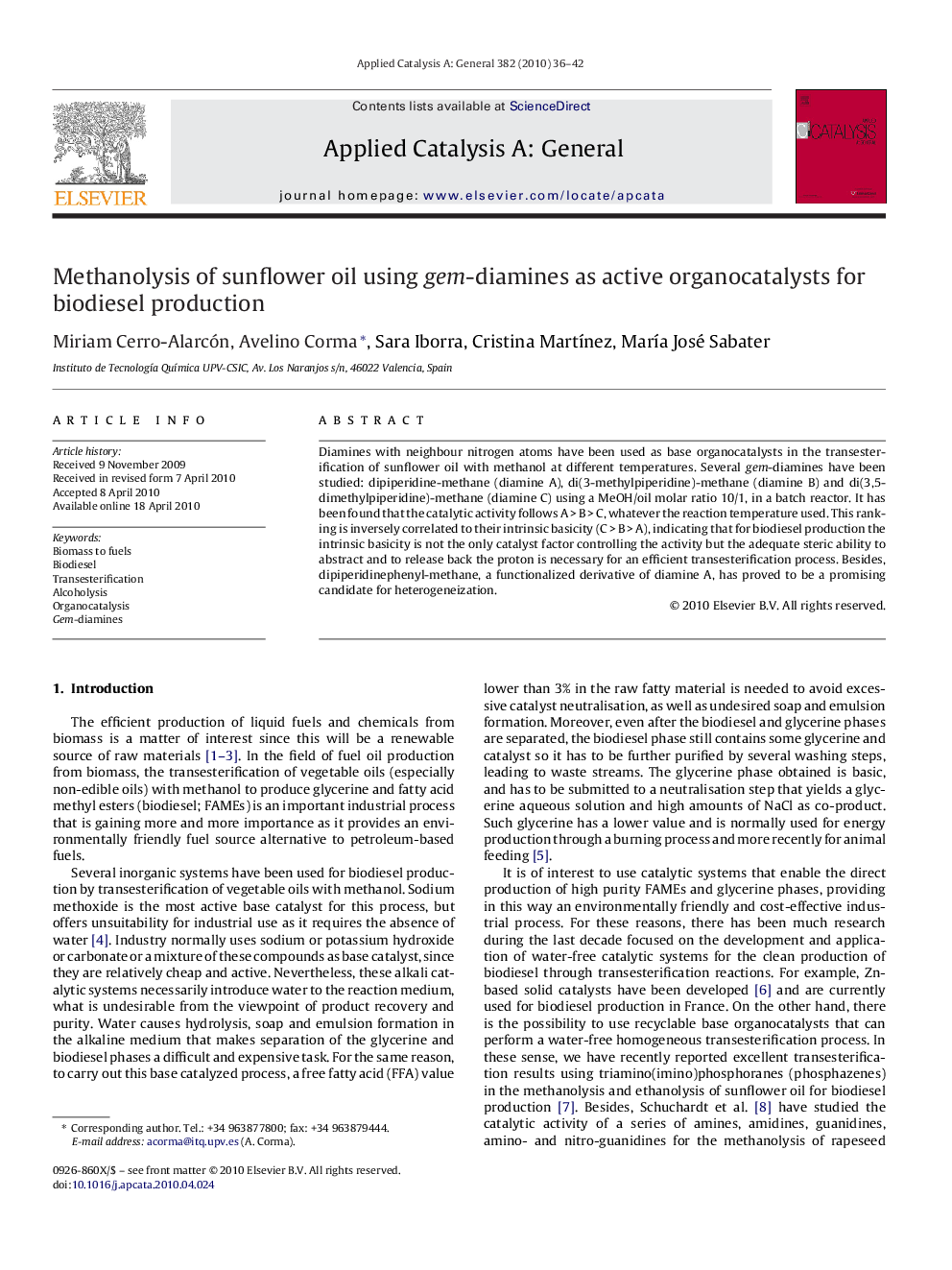| کد مقاله | کد نشریه | سال انتشار | مقاله انگلیسی | نسخه تمام متن |
|---|---|---|---|---|
| 42061 | 45909 | 2010 | 7 صفحه PDF | دانلود رایگان |

Diamines with neighbour nitrogen atoms have been used as base organocatalysts in the transesterification of sunflower oil with methanol at different temperatures. Several gem-diamines have been studied: dipiperidine-methane (diamine A), di(3-methylpiperidine)-methane (diamine B) and di(3,5-dimethylpiperidine)-methane (diamine C) using a MeOH/oil molar ratio 10/1, in a batch reactor. It has been found that the catalytic activity follows A > B > C, whatever the reaction temperature used. This ranking is inversely correlated to their intrinsic basicity (C > B > A), indicating that for biodiesel production the intrinsic basicity is not the only catalyst factor controlling the activity but the adequate steric ability to abstract and to release back the proton is necessary for an efficient transesterification process. Besides, dipiperidinephenyl-methane, a functionalized derivative of diamine A, has proved to be a promising candidate for heterogeneization.
Diamines with neighbour nitrogen atoms were used as base organocatalysts in the methanolysis of sunflower oil. Their catalytic behaviour inversely correlated to their intrinsic basicity, showing that a favourable steric ability to abstract and to release back the proton is necessary for efficient biodiesel production. Besides, a functionalized derivative of the most active diamine seems a promising candidate for heterogeneization.Figure optionsDownload high-quality image (71 K)Download as PowerPoint slide
Journal: Applied Catalysis A: General - Volume 382, Issue 1, 30 June 2010, Pages 36–42